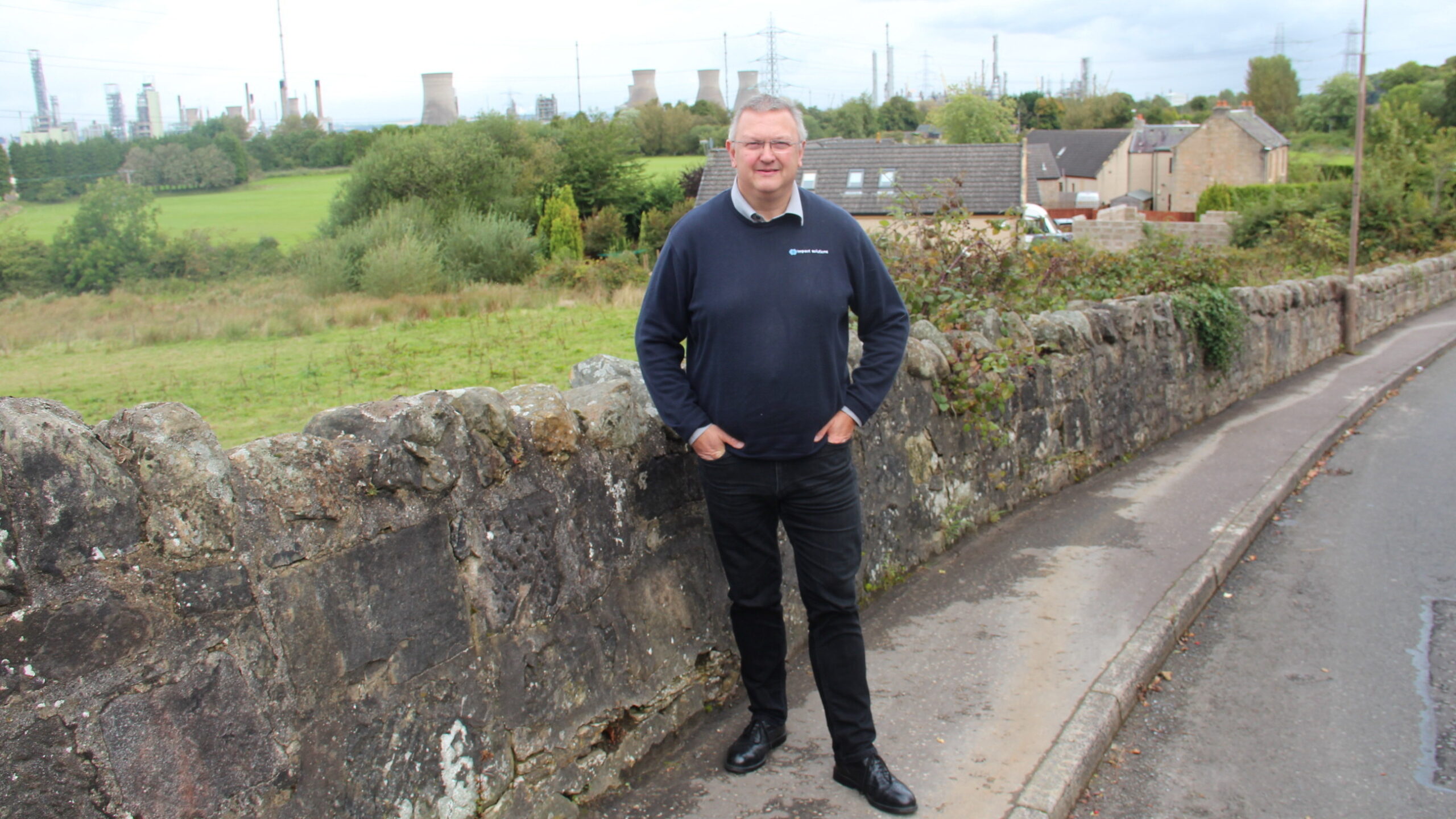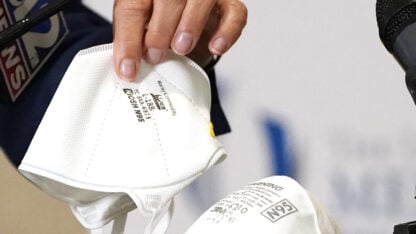The U.S. Natural Gas Boom Is Fueling A Global Plastics Boom

Kevin Ross, of the Scottish Plastics and Rubber Association, says the arrival of Pennsylvania shale gas has allowed the company to reopen a unit of the Grangemouth petrochemical plant that had been shut down for years; the plant is now operating at full production.
Reid Frazier / The Allegheny Front
On a quiet street overlooking Scotland’s largest refinery and chemical plant, Kevin Ross surveys the newest outgrowth of the American oil and gas boom.
Since 2016, natural gas from the U.S. has been feeding the Grangemouth petrochemical plant, a vast complex of cooling towers, flaring towers and pipelines. The gas is originally harvested in Western Pennsylvania, sent through a pipeline to Philadelphia, and put on ships across the Atlantic.
“It comes here, is taken off the ships, put into large storage tanks,” explains Ross, who’s president of the Scottish Plastics and Rubber Association and runs a local plastics testing company.
Natural gas is mostly used for heating homes or fueling power plants. But when it comes out of the ground it contains another key ingredient — ethane, a building block of plastics — and that is now fueling another booming industry.
America is producing so much ethane that over 300 new petrochemical and plastics plants are either planned or under construction around the country. President Trump has touted the economic benefits of this, recently telling workers at a Shell ethane plant in Pennsylvania that “we are reclaiming our noble heritage as a nation of builders.”
But there’s more ethane than existing U.S. plants can use, so in short order the U.S. has also become the world’s leading exporter of ethane. That’s feeding growing plastics industries in India and China, as well as Europe — including the Grangemouth plant — and those exports are expected to keep growing.
Don’t see the graphic above? Click here.
American shale gas is “driving investment decisions”
America’s ethane boom was a lucky break for the European chemical company INEOS. In 2011, its own supplies from the North Sea were running low, says Warren Wilczewski, an economist with the U.S. Energy Information Administration.
“INEOS looked at the United States, where ethane supply was growing, and especially in the Appalachian region, that ethane had, like, no place to go,” Wilczewski says. “And they recognized an opportunity.”
INEOS commissioned a fleet of ships, the first ever to carry ethane by sea, to move the gas from a port near Philadelphia to plants in the U.K. and Norway.
It also signed a deal with Sunoco Logistics to ship that gas from Western Pennsylvania through the Mariner East pipeline. Sunoco’s construction on that has been controversial because of its spotty environmental record and use of eminent domain. It’s the subject of criminal investigations, including one by the FBI. But the pipeline has proved vital for INEOS’ plan.
Ross, of the Scottish Plastics and Rubber Association, says the arrival of Pennsylvania shale gas has allowed the company to reopen a unit of the Grangemouth petrochemical plant that had been shut down for years; the plant is now operating at full production.
“I can’t underestimate the importance of the American shale gas and the feedstock costs for INEOS,” Ross says. “It is driving investment decisions into Grangemouth which wouldn’t have been made if it wasn’t for the availability of the shale gas.”
INEOS did not agree to an interview for this story. But in a company video, CEO Jim Ratcliffe said the cost of ethane from Pennsylvania was about one-fourth of what he would have had to pay for it in Europe.
“I think for some of these [chemical plants] in Europe it’s the only way they can survive, if we can bring some of the U.S. economics across to Europe,” Ratcliffe said.
Pushback to fracking’s “toxic element”
Plastics and petrochemicals are increasingly important to the oil and gas industry. They’re expected to account for more than a third of growth in world oil demand by 2030, and half of all growth by 2050, according to the International Energy Agency. This worries environmentalists, who point out that the plastics industry accounts for around 4% of all carbon emissions, and that number is expected to increase.
Don’t see the graphic above? Click here.
Much of the growth in plastics will be in Asia, where millions of people will be moving into the middle class in the next few decades, says Jennifer Van Dinter, an analyst at S&P Global Platts.
“If you’re adding plumbing to a home, you’re going to use PVC pipe,” she says. “You might be using insulation, which is going to be derived from petrochemicals.” She says more people also will be buying cars, and even if it’s an electric model, “there’s a lot of plastic components.”
In Scotland, INEOS got over $350 million in loan guarantees from the U.K. to retrofit the Grangemouth plant for American shale gas. But the company also wants a local supply, and it’s pushed for the U.K. to allow fracking. That’s the controversial technology that breaks up rock deep underground to get hard-to-reach oil and natural gas, and which has made America’s gas boom possible.
The idea was met by intense opposition.
Norman Philip, with Friends of the Earth Scotland, grew up in Grangemouth, where his father worked at the plant under a previous owner. But he opposes fracking because of what he’s heard about it from communities in the U.S. and Australia.
“People were telling us of gas leaks. They were telling us of, like, children having headaches,” he says. “There was a toxic element of it.”
The pushback has resulted in an ironic twist: in 2015 Scotland put in place in moratorium on fracking, and the U.K. government recently did the same. And yet, it’s still legal to import shale gas produced by fracking in the U.S.
Lee Sinclair is a railroad engineer at the Grangemouth petrochemical plant and has mixed feelings about that. “The only thing I don’t like about it is, Scotland said, ‘No you’re not fracking here,’ so they decided to go to America to get this gas,” Sinclair says.
He’d rather the U.K. get its own local supply. But for now, he says, America’s boom in gas and ethane is helping him keep his job.
9(MDAxODM0MDY4MDEyMTY4NDA3MzI3YjkzMw004))








